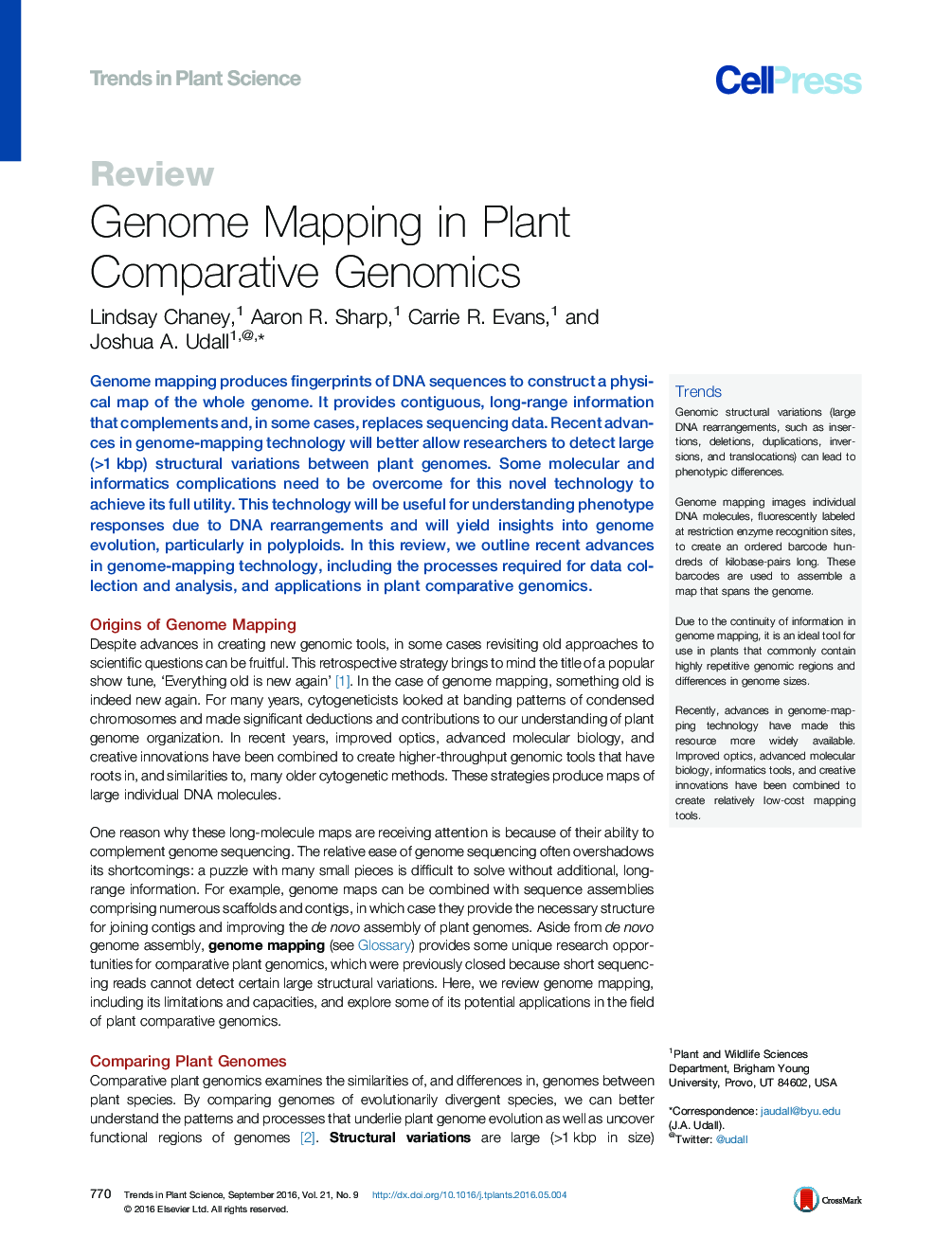| Article ID | Journal | Published Year | Pages | File Type |
|---|---|---|---|---|
| 2825688 | Trends in Plant Science | 2016 | 11 Pages |
Genome mapping produces fingerprints of DNA sequences to construct a physical map of the whole genome. It provides contiguous, long-range information that complements and, in some cases, replaces sequencing data. Recent advances in genome-mapping technology will better allow researchers to detect large (>1 kbp) structural variations between plant genomes. Some molecular and informatics complications need to be overcome for this novel technology to achieve its full utility. This technology will be useful for understanding phenotype responses due to DNA rearrangements and will yield insights into genome evolution, particularly in polyploids. In this review, we outline recent advances in genome-mapping technology, including the processes required for data collection and analysis, and applications in plant comparative genomics.
TrendsGenomic structural variations (large DNA rearrangements, such as insertions, deletions, duplications, inversions, and translocations) can lead to phenotypic differences.Genome mapping images individual DNA molecules, fluorescently labeled at restriction enzyme recognition sites, to create an ordered barcode hundreds of kilobase-pairs long. These barcodes are used to assemble a map that spans the genome.Due to the continuity of information in genome mapping, it is an ideal tool for use in plants that commonly contain highly repetitive genomic regions and differences in genome sizes.Recently, advances in genome-mapping technology have made this resource more widely available. Improved optics, advanced molecular biology, informatics tools, and creative innovations have been combined to create relatively low-cost mapping tools.
